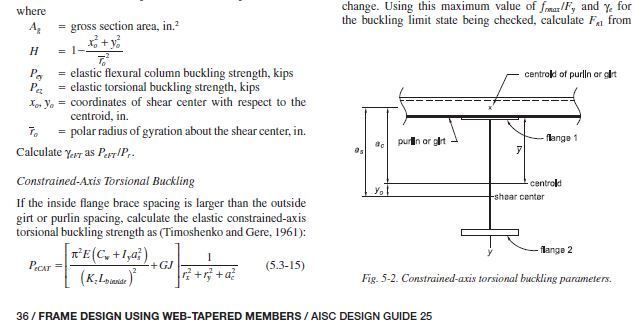YCLJ
Structural
- Aug 17, 2015
- 3
Hi,
I'm designing a 12-ft long rectangular HSS beam (say, HSS 12x4) with axial load and the beam is also connected to a slab through shear studs on the top flange. So you can see the top flange is well restrained.
For axial load check, do I consider the HSS unbraced in the weak direction? Or should I assume the slab on top flange is fully bracing the HSS in weak direction?
Any reference to AISC literature is welcome.
I'm designing a 12-ft long rectangular HSS beam (say, HSS 12x4) with axial load and the beam is also connected to a slab through shear studs on the top flange. So you can see the top flange is well restrained.
For axial load check, do I consider the HSS unbraced in the weak direction? Or should I assume the slab on top flange is fully bracing the HSS in weak direction?
Any reference to AISC literature is welcome.

